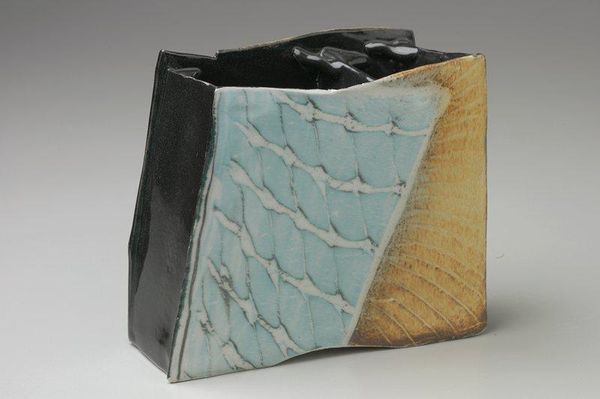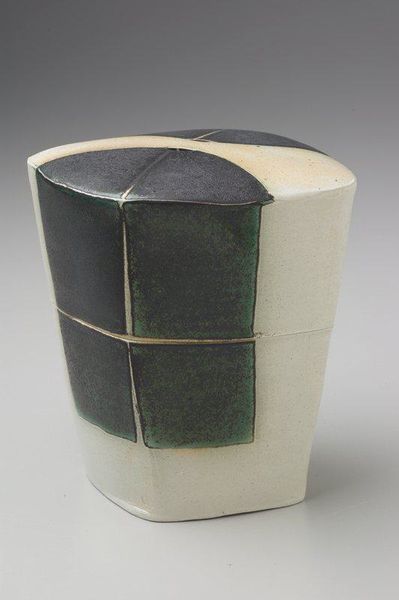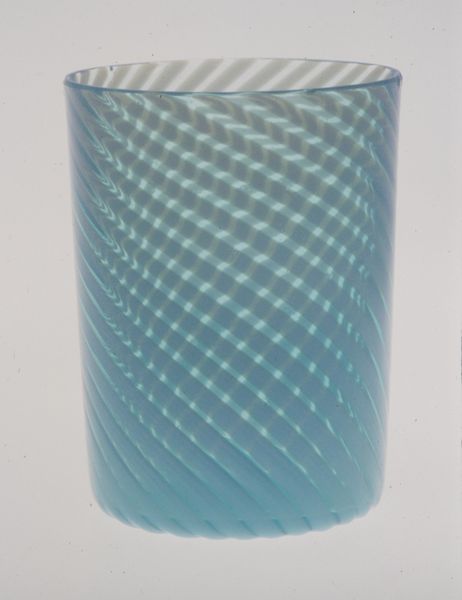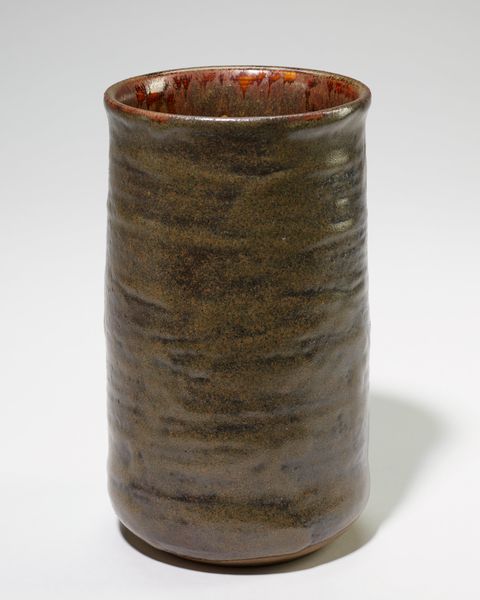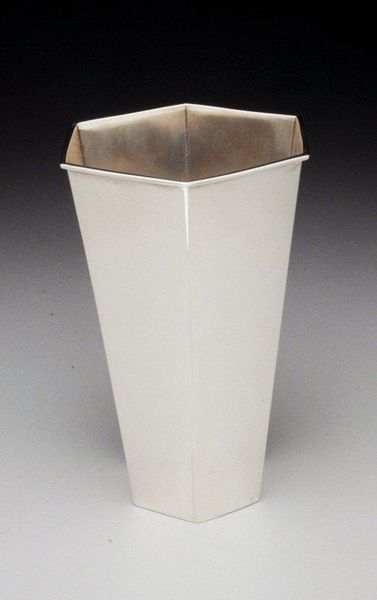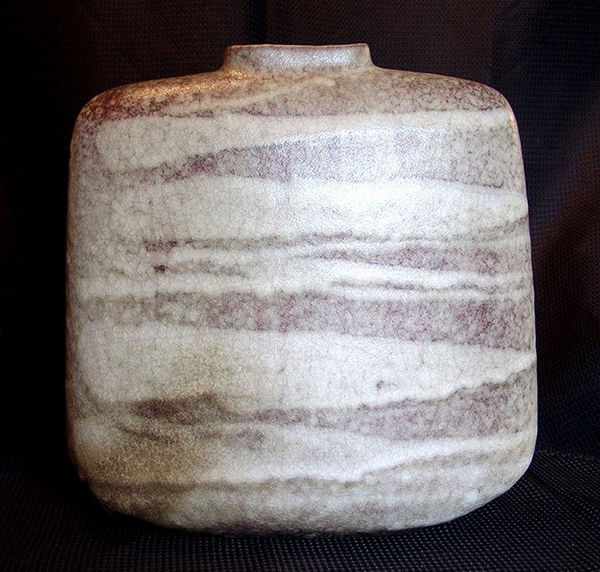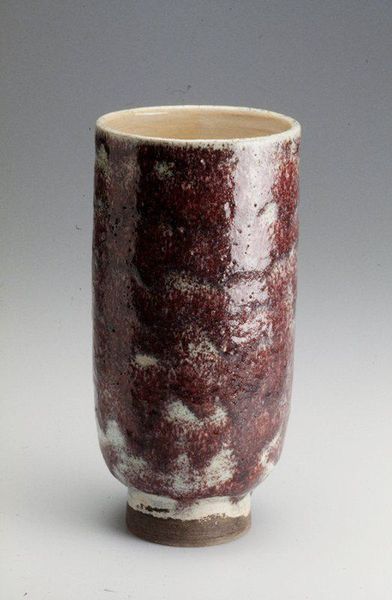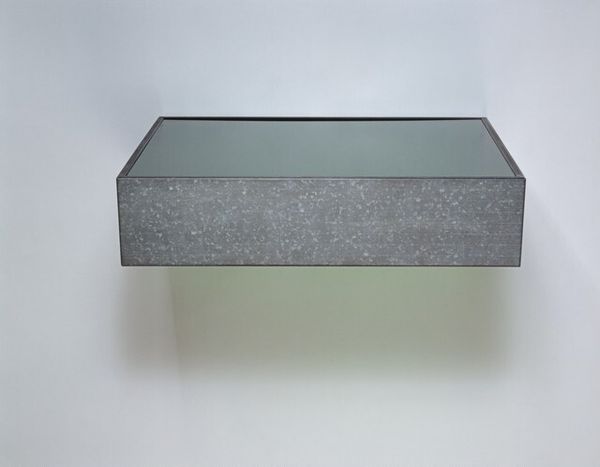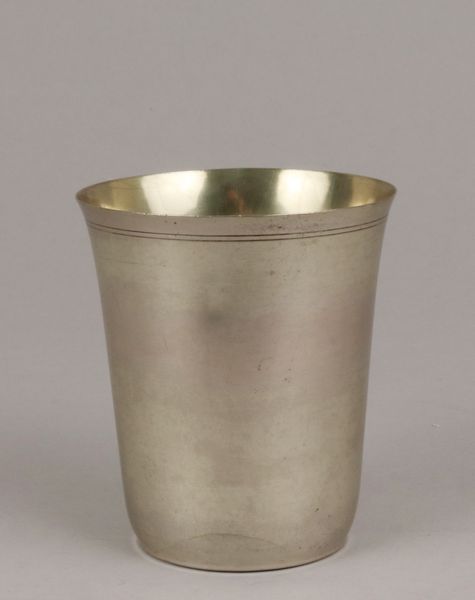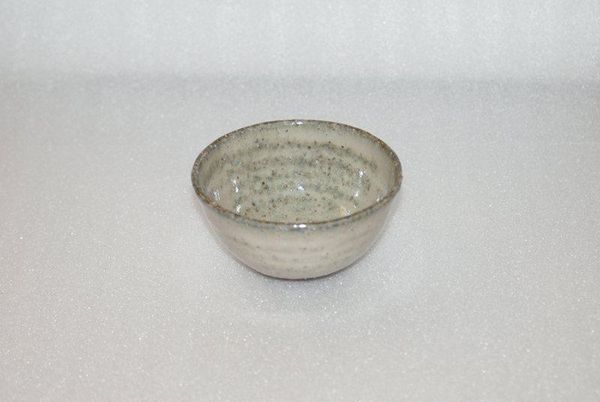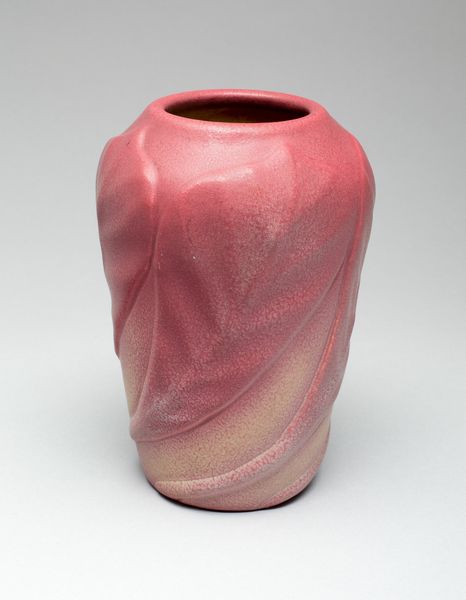
ceramic
#
ceramic
#
japan
#
abstract
#
vessel
Dimensions: 23 × 17 1/2 × 5 1/2 in. (58.42 × 44.45 × 13.97 cm)
Copyright: No Known Copyright
Editor: Here we have Kobayashi Hideo’s "Vessel," a 2006 ceramic piece at the Minneapolis Institute of Art. It feels very grounded and stable, but also a bit… fractured. What do you see in this piece? Curator: What strikes me is the tension between the object's utilitarian designation, "vessel," and its undeniably abstract form. Consider the history of ceramics in Japan – a tradition often upholding functionality and reverence for natural materials. But Hideo disrupts this, doesn’t he? Editor: It certainly doesn't look like any vase I've ever seen. Curator: Exactly! This fracturing, as you called it, speaks to a broader fragmentation in contemporary society. How does traditional craftsmanship negotiate a world grappling with industrialization and global exchange? The rough texture, contrasting with the precise metallic lip, adds to this dialogue, wouldn’t you agree? Editor: Definitely. It's like it's trying to be both perfect and imperfect at the same time. Is there something specific about Japanese art that makes this tension particularly resonant? Curator: Absolutely. Think about the concept of *wabi-sabi*, the beauty in imperfection and impermanence. Hideo's "Vessel" isn't simply a rejection of tradition; it's a critical engagement with it. He takes this traditional form, dissects it, and reconstructs it in a way that reflects contemporary anxieties about identity, place, and the very meaning of “craft.” It asks us: who are we when our traditions are being constantly reshaped? Editor: That makes so much sense. I was just seeing a fractured form, but it's so much more than that – it's a statement. Curator: Precisely! And a provocation. Art should push us to question the narratives we inherit and create space for new ones. Editor: I will definitely remember that when viewing art in the future. Curator: This was a pleasure! It's vital to recognize how art intersects with philosophy, cultural studies, and social critique.
Comments
No comments
Be the first to comment and join the conversation on the ultimate creative platform.
